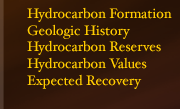
Avian Species - Pigeon Guillemot
General Information
This species resides in rocky coastal areas, with shallow inshore waters as its feeding grounds. Nest cavities are found amongst holes and rock crevices on the West, North, East, and South sides of Great Race Rocks. Some habitat for nesting was created years ago when blasting for the helicopter pad produced rubble that they could tunnel under. Some predators include: Seagulls, Bald eagles and river otters. The Pigeon Guillemot’s diet consist of Gunnels, pricklebacks, ronquils, sculpins, flatfish, rockfish, small crustacea, squid, sand lance, smelt, juveniles of cod, herring, pollock, and salmon. Due to their rather low population, great efforts are being taken to keep predators away from the Pigeon Guillemot—primarily foxes, which are their major natural predators.
Critical Time Periods
Pigeon Guillemots begin to return to their breeding grounds in April. In
May, most of the birds are present at their colonies and courtship begins.
Eggs are generally laid between May and June, while fledging occurs between
July and August, taking anywhere from 55
to 100 days.
Sensitivities
While research has not shown this species to have many sensitivities, one very prominent sensitivity is that to oil. Because guillemots feed in shallow, nearshore waters, guillemots and the fish and invertebrates on which they prey are vulnerable to oil pollution. As a result, an estimated 10-15 percent of the spill area population may immediately following the spill, according to information from past spills.





